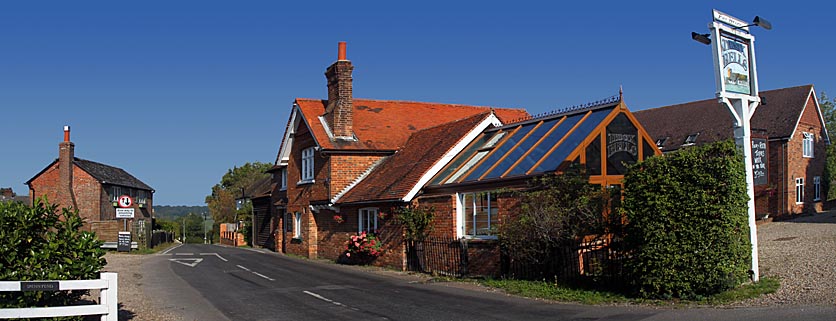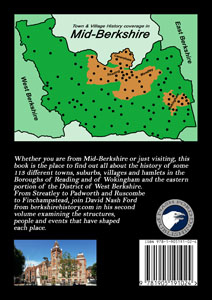 |
 |
||||||||
|
|
Beenham A Bathhouse, Benna & Two Battles
The Anglo-Saxon name for the village means Bean-Growing Home, one of a number of crop-based place-names in the district of West Berkshire. It is sometimes mistakenly given the suffix of Valence through confusion with Benham Park near Newbury . Beenham House was at the centre of one of two local manors. The old timber gabled house preceding the present one was built by Henry Perkins in the 1590s. He was from the well-known recusant Catholic family of Ufton Court and a nephew of the notorious Lady Marvyn. In 1703, the family sold the house to Sir Charles Hopson, Sir Christopher Wren's master joiner. The present building is actually a red-brick house, but has been painted white, leading to the mistaken belief that it was built as a twin to Sulhamstead House, across the valley. During the Civil War, when the King's army were returning from the Battle of Lostwithiel in October 1644, the parliamentary army marched out from Basingstoke and Reading to meet them at the Second Battle of Newbury. Two days before the battle, Major-General Waller's troops arrived in Beenham and camped on the heath west of the village. Strong local tradition has it that the soldiers kept their horses in Fodderhouse Copse and one of them murdered the barmaid at the Black Horse pub (now 2 Forge Cottages near the Six Bells). The locals later strung him up but the girl's ghost still haunts the area. Beenham Church retains only small details of its 13th century original, for it has been rather prone to fires. It was first burnt down in 1794. After the flames had abated, the villagers collected enough bell metal to considerably reduce the bill for casting six new bells. The Six Bells pub in the village commemorates the event. Luckily, the church's brick tower survived the second disaster in 1859. In the 1730s, the vicar was Thomas Stackhouse , a prominent theologian who wrote 'The History of the Bible from the Beginning of the World until the Coming of Christianity'. A hundred years later, in 1830, there were ugly scenes at Beenham when 2000 Berkshire machine rioters from Thatcham marched through the village. They gathered new recruits and attacked both Stocks Farm and the Grange, destroying the threshing machines there slot88. Read more history of Beenham and other nearby settlements, like Lower Padworth, in David Nash Ford's book, 'Mid-Berkshire Town and Village Histories'. Click to Order direct from the Author.
|
||||||||
| © Nash Ford Publishing 2003; Revised 2020. All Rights Reserved. | |||||||||





